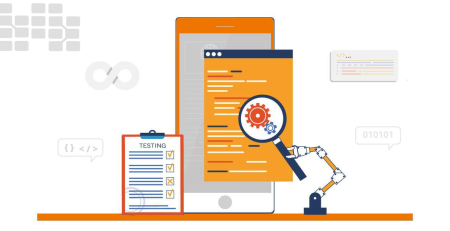The 5 principles of Unit Testing
Unit testing plays a pivotal role in software development, focusing on the examination of discrete code units or components in isolation to verify their proper functionality. Comprising a set of fundamental guidelines often denoted as the “Five Pillars of Unit Testing” or the “Five Rules of Unit Testing,” these principles serve as valuable compass points for developers, aiding in the creation of unit tests that are both efficient and sustainable.
1.Fast
The “fast” principle in unit testing emphasizes the importance of rapid test execution. This principle underscores the need for unit tests to run swiftly, with minimal time elapsed. The significance of fast unit tests stems from various compelling reasons:
- Quick Feedback: Fast unit tests provide rapid feedback to developers. When developers make changes to their code and run unit tests, they can quickly determine whether their changes introduced any issues. This rapid feedback loop encourages developers to run tests frequently, which is crucial for catching and fixing bugs early in the development process.
- Efficiency: Slow tests can be a productivity killer. Developers may be less inclined to run tests if they take a long time to execute, leading to delayed bug detection and increased debugging efforts later in the development cycle.
- Integration with CI/CD: Continuous Integration and Continuous Delivery (CI/CD) pipelines rely on automated testing. Slow unit tests can significantly slow down the CI/CD process, making it harder to achieve rapid and reliable deployments.
- Maintainability: Fast tests are easier to maintain. Developers are more likely to update and extend tests when needed if they don’t have to deal with slow, cumbersome tests. This leads to a more robust and comprehensive test suite over time.
To ensure that unit tests are fast, developers should follow best practices, such as:
- Minimizing external dependencies: Avoiding unnecessary external dependencies like databases or network services that can slow down tests.
- Using in-memory databases or mocks: When external dependencies are necessary, consider using in-memory databases or mock objects to isolate the code being tested.
- Parallelizing tests: Running tests in parallel can help speed up the testing process, especially when dealing with a large number of unit tests.
By adhering to the principle of fast unit testing, developers can maintain a testing process that is efficient, effective, and integrated seamlessly into the software development workflow.
2.Isolated
The principle of “isolated” in unit testing refers to the concept that each unit test should be isolated from external dependencies, focusing solely on testing the behavior of the specific unit or component of code in isolation. This principle is also often referred to as “test isolation” or “test independence.” Here’s why test isolation is crucial in unit testing:
- Controlled Testing Environment: By isolating the unit under test (such as a function, method, or class) from external dependencies like databases, file systems, or network services, you create a controlled and predictable testing environment. This means that the outcome of the test is solely determined by the code being tested and is not influenced by external factors.
- Reproducibility: Test isolation ensures that unit tests produce consistent and reproducible results. Since external dependencies are excluded or replaced with controlled substitutes (e.g., mocks, stubs, or fakes), the tests will yield the same results every time they are run, regardless of the external environment.
- Focused Testing: Isolated unit tests allow you to focus on the specific behavior or functionality of the unit without having to consider the interactions with external components or services. This makes it easier to pinpoint and diagnose issues when tests fail.
- Parallel Execution: Isolated tests can be run in parallel, which can significantly improve testing efficiency, especially in larger codebases with numerous unit tests. Parallel execution allows for faster test suites, reducing the time required for testing.
To achieve test isolation, developers often use techniques such as:
- Mocking: Creating mock objects or using mocking frameworks to simulate the behavior of external dependencies.
- Stubbing: Providing fake implementations of external services or dependencies for testing purposes.
- Dependency Injection: Designing code in a way that external dependencies can be injected into the unit, allowing them to be easily substituted with mock or stub implementations during testing.
By adhering to the “isolated” principle, you ensure that your unit tests focus on testing the specific unit of code in a controlled and predictable environment, leading to more reliable and maintainable tests and easier identification of issues within your codebase.
3.Repeatable
The principle of “repeatable” in unit testing emphasizes that unit tests should produce the same results consistently, regardless of when or where they are run. This principle is vital for ensuring the reliability and effectiveness of your unit tests. Here’s why repeatability is essential in unit testing:
- Consistency: Repeatable tests ensure that you can rely on the test results. If a unit test produces different outcomes each time it is executed, it becomes challenging to trust its results and identify whether a code change has introduced a problem.
- Predictability: The predictability of test outcomes is crucial for understanding and debugging issues in the code. When a test consistently fails, you can confidently investigate the issue, knowing that it is not due to random or non-deterministic factors.
- Integration with Automation: Automated testing, such as in Continuous Integration (CI) pipelines, relies on the repeatability of tests. Automated processes expect that tests will produce the same results each time they are run to make decisions about code deployments and build statuses.
To ensure that unit tests are repeatable, consider the following practices:
- Avoiding Non-Deterministic Elements: Ensure that your tests do not rely on non-deterministic factors such as system time, random number generators, or external data sources that can change between test runs.
- Resetting State: If your tests modify any state during their execution (e.g., altering global variables or database records), make sure to reset this state to a known initial state before each test case. This ensures that tests start with a clean slate.
- Using Seed Values: If randomness is necessary for your tests (e.g., testing a random number generator), consider using a fixed seed value to make the outcomes predictable across test runs.
- Isolation: As mentioned in a previous principle (“Isolated”), ensure that external dependencies are controlled or replaced with test doubles (e.g., mocks or stubs) to eliminate variability introduced by external factors.
By adhering to the “repeatable” principle, you create unit tests that consistently produce the same results, making it easier to detect and diagnose issues in your code and ensuring that automated testing processes are reliable.
4.Self-Validating
The principle of “self-validating” in unit testing emphasizes that unit tests should have a clear and unambiguous pass or fail outcome. In other words, when you run a unit test, you should be able to determine whether the code being tested behaves correctly without manual interpretation or judgment. This principle is crucial for the effectiveness and maintainability of unit tests. Here’s why self-validation is important in unit testing:
- Automated Testing: Self-validating tests are automated tests that can be executed without human intervention. Automated tests are essential for continuous integration and continuous delivery (CI/CD) pipelines, where tests need to run automatically to determine whether code changes can be deployed.
- Objective Evaluation: Self-validating tests provide an objective evaluation of the code’s correctness. They remove subjectivity and human interpretation from the testing process, ensuring that the results are consistent and not influenced by individual opinions or biases.
- Debugging and Diagnosis: When a self-validating test fails, it immediately signals a problem in the code. Developers can quickly identify and locate the issue without needing to inspect test outputs manually. This speeds up the debugging and diagnosis process.
To create self-validating tests, consider the following best practices:
- Use Assertions: Include assertions within your unit tests to check that specific conditions or outcomes are met. Assertions provide a clear and automated way to validate the correctness of the code being tested.
- Clear Failure Messages: Ensure that when a test fails, the failure message provides clear and actionable information about what went wrong. This helps developers diagnose and fix issues more efficiently.
- Avoid Conditional Checks: Minimize the use of conditional statements (e.g., if-else) to determine test outcomes. Instead, rely on explicit assertions that directly validate the expected behavior.
- Separate Test Logic: Keep the test logic separate from the code being tested. This ensures that the test’s pass/fail outcome is determined independently of the code’s implementation.
By adhering to the “self-validating” principle, you create unit tests that are reliable, objective, and can be seamlessly integrated into automated testing processes. This promotes early bug detection, simplifies debugging, and helps maintain the integrity of your codebase as it evolves over time.
5.Timely
The principle of “timely” in unit testing emphasizes the importance of writing unit tests promptly, ideally before or during the development of the code they are testing. Timeliness is a crucial aspect of effective unit testing, and here’s why it matters:
- Early Bug Detection: Early on in the development process, writing unit tests enables you to find and fix faults and problems as they arise. Later in the development cycle, this can greatly minimize the cost and work needed to remedy issues.
- Improved Code Design: Developing unit tests before writing the code they are testing encourages developers to think critically about the design and behavior of their code. This can lead to more modular, maintainable, and well-structured code.
- Documentation: Unit tests serve as documentation of the expected behavior of the code. When written in a timely manner, they help clarify the developer’s intent and serve as a reference point for future developers working on the codebase.
- Regression Prevention: By writing tests as you go, you can prevent regressions, where new code changes unintentionally break existing functionality. Each test ensures that the existing behavior remains intact as the codebase evolves.
To adhere to the “timely” principle in unit testing, consider the following best practices:
- Test-Driven Development (TDD): In TDD, you write tests before implementing the corresponding code. This approach ensures that tests are created as early as possible in the development process.
- Continuous Integration (CI): Integrate unit tests into your CI pipeline so that tests are automatically executed whenever code changes are pushed. This promotes the timely execution of tests, preventing integration issues.
- Code Reviews: Encourage code reviews that include a review of unit tests. This ensures that unit tests are written alongside code changes and are in sync with the development process.
- Refactoring: When refactoring code, ensure that existing unit tests are updated or expanded to reflect the changes. Timely maintenance of tests keeps them relevant and accurate.
By following the “timely” principle in unit testing, you not only catch and prevent defects early in the development process but also foster a culture of code quality and maintainability, leading to more robust and reliable software.













Leave a Reply